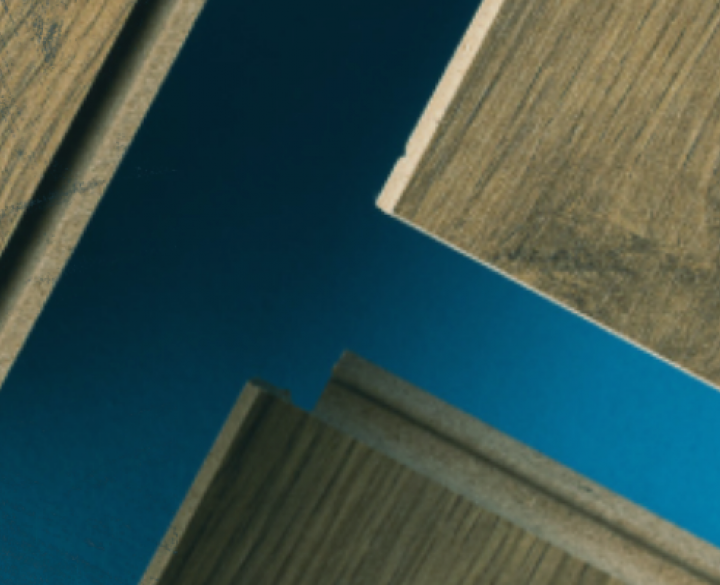Applicant: i4F LICENSING
Inventor: Eddy Alberic Boucké
Patent application: WO2023/052559 A1 - NL2029282 B1
The problem
Decorative panels with interconnecting profiles make it possible to construct a so-called floating (wall, floor or ceiling) covering by means of a large number of panels connected to each other.
There is a general interest in developing a floating covering of interconnected panels, where the individual panels have the appearance of authentic glazed tiles. However, it has proven to be difficult and expensive to produce such panels that combine the required decorative quality on the top of the panel with the provision of interconnecting profiles on the side edges of the panel. In addition, the decorative image should be of high definition and accuracy, and the printed layer as a whole should be scratch and abrasion resistant. It is also required that the panel can be manufactured on a large scale using mass production techniques.
The solution
The present invention is aimed at finding an expedient way of manufacturing the panel while ensuring an optimum quality of the panel with regard to its intended use.
The manufacturing method comprises the following steps: i) producing at least one support layer made of a ceramic, stone and/or mineral material; ii) providing an upper side of the support layer with a printed layer having a decorative image comprising inorganic pigments, in particular metal-based pigments, said printed layer being a glaze layer.
The invention relates to a surface covering, in particular for a floor, ceiling or wall surface, constructed by a plurality of adjacent panels according to the first aspect of the invention.
The present invention relates to a decorative panel, in particular a wall, floor or ceiling panel, of a planar design having a top side, a bottom side and side edges. Preferably, the panel according to the invention has a laminated structure which comprises an additional sub-carrier layer having an upper surface onto which the carrier layer is directly or indirectly adhered, and wherein the sub-carrier layer is made from a different material than the carrier layer.
The sub-carrier layer preferably has a thickness which is more than the thickness of the carrier layer, wherein the sub-carrier layer is in particular at least twice as thick compared to the carrier layer, more in particular at least three or four times as thick.
This construction makes the panel less expensive and relatively little of the carrier layer material is required for the production of the panels.
The carrier layer is made of a material that is of a sufficiently tough quality which renders the carrier layer less brittle than materials that are usually selected for carrier layers of tiles. A suitable carrier layer in this respect, comprises a wool layer formed by vitreous fibres bonded together by a cured thermoset polymeric binder material. The wool layer may comprise stone wool, mineral wool, slag wool, basalt wool, and/or glass fibres. The binder material may be a urea- modified phenol formaldehyde resin, an alkanolamine/carboxylic acid anhydride reaction product, an acrylic resin, and/or an epoxy resin.
Advantages
- The carrier layer is bonded to the subcarrier layer (preferably) by the application of an intermediate layer of adhesive.
- The connecting profiles allow two panels to be coupled together by a vertical and/or angled movement of the respective side edges. This is advantageous because it prevents the sub-base being exposed to the relatively high temperatures required for the formation of the glaze layer on the base (which involves firing to obtain a glaze layer).
- These panels allow the structural and visual advantages of a tile material, such as a ceramic, stone and/or mineral material, to be combined with a supporting sub-base layer of a different material which is less expensive, has a reduced density and has attractive insulating properties with respect to a substrate surface on which the panels are placed.




